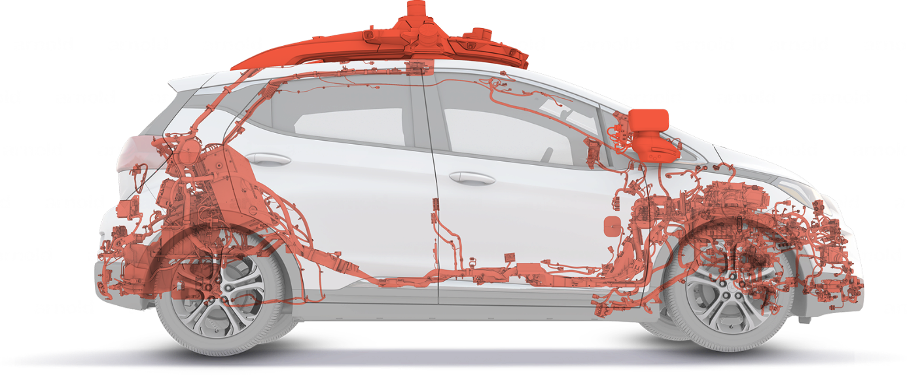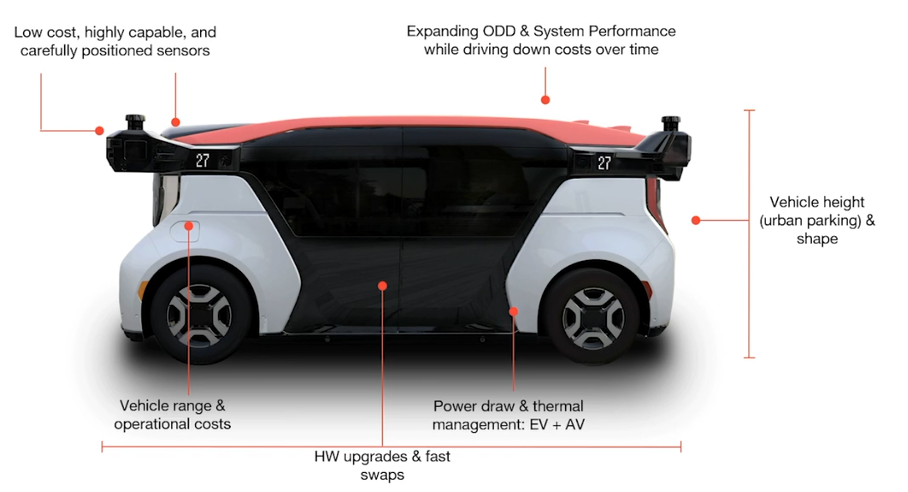
At AutoSens Brussels we were joined by speaker Robert Vets, Hardware Engineering Director Sensors at Cruise & Managing Director of Cruise Munich GmbH. We caught up with Robert after the event to hear about his experience and go deeper into the challenges presented in his keynote, including safety, trends to reduce costs, and what the next ten years holds for Cruise.
Missed Robert’s presentation at AutoSens? Grab an on-demand pass to watch it in full ➔
It was so great to see you at AutoSens in Brussels! What were your highlights from the event?
Especially for Cruise’s Munich team, which oversees the development of high-resolution radars for self-driving Cruise vehicles, from hardware and software to embedded systems and data products, it was a great opportunity to showcase our technology and discuss the challenges of autonomous driving.
What we also really like about AutoSens is, it brings together small companies, big companies, the supplier side, the OEM side. AutoSens demonstrated its importance as a platform for the Sensor community.
You presented on the latest trends for autonomous sensing – can you share a bit more about your session with us?

During my keynote, I also gave a glimpse of our next platform, the Cruise Origin. This is a purpose-built, all-electric vehicle designed to optimize the user experience. This Cruise Origin has no steering wheel or pedals and will instead have six seats inside facing each other. The Origin is the size of a mid-size car, but has a lot more space; it has three times larger doors than the average car and is accessible for all.
The Origin is intended to be used as a shareable vehicle that’s on the road at all times, shuttling passengers to their destinations. The Origin is scheduled to go into operation in 2023.
With Origin, we didn’t just adopt the Bolt’s sensors. Years of development experience in sensors, by Cruise, our partners, our suppliers, and the industry as a whole has gone into the Origin. And with that, we are still just at the beginning of this transformational journey.

In my keynote, we got to share a glimpse of our experience with the Chevy Bolt driving in the real world in San Francisco, fully autonomously, and to explain challenges to which we all – the developers of autonomous driving – must find solutions. I’ve shown some scenes, which illustrate how the vehicle must act and drive. Following the rules of the road isn’t always sufficient. There are a lot of things going on the road. For example, the car must pass a stopped delivery vehicle and must leave the lane for this purpose. It’s not just about making visible what’s happening around the vehicle in the near and far distance it requires contextual understanding.
The AV system takes data from all the sensors, processes, and evaluates the data in real time; segmentation, object tracking, fine-grained classification, prediction, understanding of attributes, and assessing occlusions. This is a highly complex task. For each situation we develop “agent” models that predict behaviour. We also need to predict scene scenarios where the view is obscured, etc.
Emergency vehicles are good examples of some challenges. If you think about emergency vehicles: sometimes the emergency vehicles are far away. We can’t see them, but we can hear them. So, we developed a beamforming microphone system allowing the car to locate the siren with an understanding of where it is coming from.
Another example was an un-expected U-turn in front of the AV where we could show how the AV continuously adjusts its prediction of the “agent” behaviour in the scene and adjusts its own behavior.
You talked about a shift in the automotive world – merging our industrial legacy with digital technology. Can you expand on what this means for the next five-ten years?
There is a lot of discussion in the community, including what the challenges are and how sensors evolve and so on. When you look at the sensors and think about how they enable autonomous driving, you realize that it’s not about the technologies, components, devices, and not about algorithms. It’s about enabling change in the automotive world – merging an industrial legacy with digital technology. It will include a shift to software-defined and electric vehicles that include the connected car and autonomy.
A lot of people believe that by the end of the decade most new cars will have some autonomous capabilities. You have brilliantly hosted AutoSens Brussels at Autoworld, where the history of the automobile is on display. In that history we see several points where new technology changed the industry. We are at another one of those points in history. Over the next five years we will see the automotive industrial ecosystem evolve to embrace this change. It’s hard to say what exactly will emerge in the next five to ten years, but I expect we’ll see a real decrease in traffic accidents and increase in roadway safety. That would be great.
You emphasised the cost challenge for mass production – how can we tackle this?
Yes, that is one of the biggest challenges we are facing in the community. Before we can talk about cost though, we must continue to stress that there can be no compromise when it comes to safety.
Nevertheless, we have to reduce costs.
Why costs? Because, for AVs to have the positive impact on society that we are striving for, the systems have to deploy at scale, and to deploy at scale the systems have to be economically viable. Hundreds of thousands of dollars of sensing and computer equipment per vehicle is simply not viable outside of a small research fleet.
I see three main trends to reduce costs and thereby look at the total costs of a vehicle development.
Trend 1: The fundamental cost of the components has to come down, and that’s going to happen through use of the proper technology and good product design with an eye for design for manufacturing. We can not rely only on promises of large production volumes to drive down the cost. The hardware designs must be efficient.
Trend 2: We need to reduce the number of sensors overall. We tend to rely on too many sensors at present. The vehicle we showed at the AutoSens exhibition is our first-generation AV. The vehicle has an extensive sensor suite.
Cruise currently has about 70 of these first-generation vehicles running in San Francisco every day. As we operate the vehicles, we are learning what information is needed and what is not. It turns out that not all sensors are needed. Therefore, we can optimize the number of sensors. This is important because there is also a cost for processing data. A lot of sensors with tons of data requires a huge computer and complex networks that increase cost and present other challenges. The task is to look at how we can use the data more efficiently; how we can get the maximum value out of the data we produce with the sensors.
Trend 3: The third trend, which is really important, is that we need sensor hardware to be forward compatible. We need to engineer the hardware such that software features can be developed based on them in the future. Why? Because the development timelines for hardware are comparatively long and the close coupling of perception and sensing mean that SW is built upon the HW. As hardware and software become more closely connected we will want robust sensing architectures to build upon.
Hardware and software will need to come together to reach the higher levels of automation. How do you see this happening?
Simply put, it will be based on the ever closer collaboration between the SW and HW teams in the development and understanding of the AV system from end to end. We’re doing that at Cruise, and we know others are too. It is a challenge given the different time constants and processes for HW and SW development, but solving those challenges is part of creating the technology.
AutoSens is here to facilitate conversations across the industry, so that we can take strides forward together. What role does Cruise play in this?
Cruise has been and will continue to be a driving force in advancing the technologies and services that enable fully autonomous driving in partnership with the broader industry and companies big and small. We are focused on building the world’s most advanced self-driving vehicles to safely connect people to the places, things and experiences that matter to them. Saving lives is at the heart of our engineering challenge.
And finally, talk to us about Cruise’s future plans. Is it too soon to be thinking about what we’ll be sharing at AutoSens 2030?
In 2030, we’ll look back at 2022 as a transformational year for L4 technology, and as I said in the keynote, we expected fully autonomous vehicles to be commonplace in 2030. We’ll get to look back at the various approaches and challenges we see today.
Missed Robert’s presentation at AutoSens? Grab an on-demand pass to watch it in full ➔






